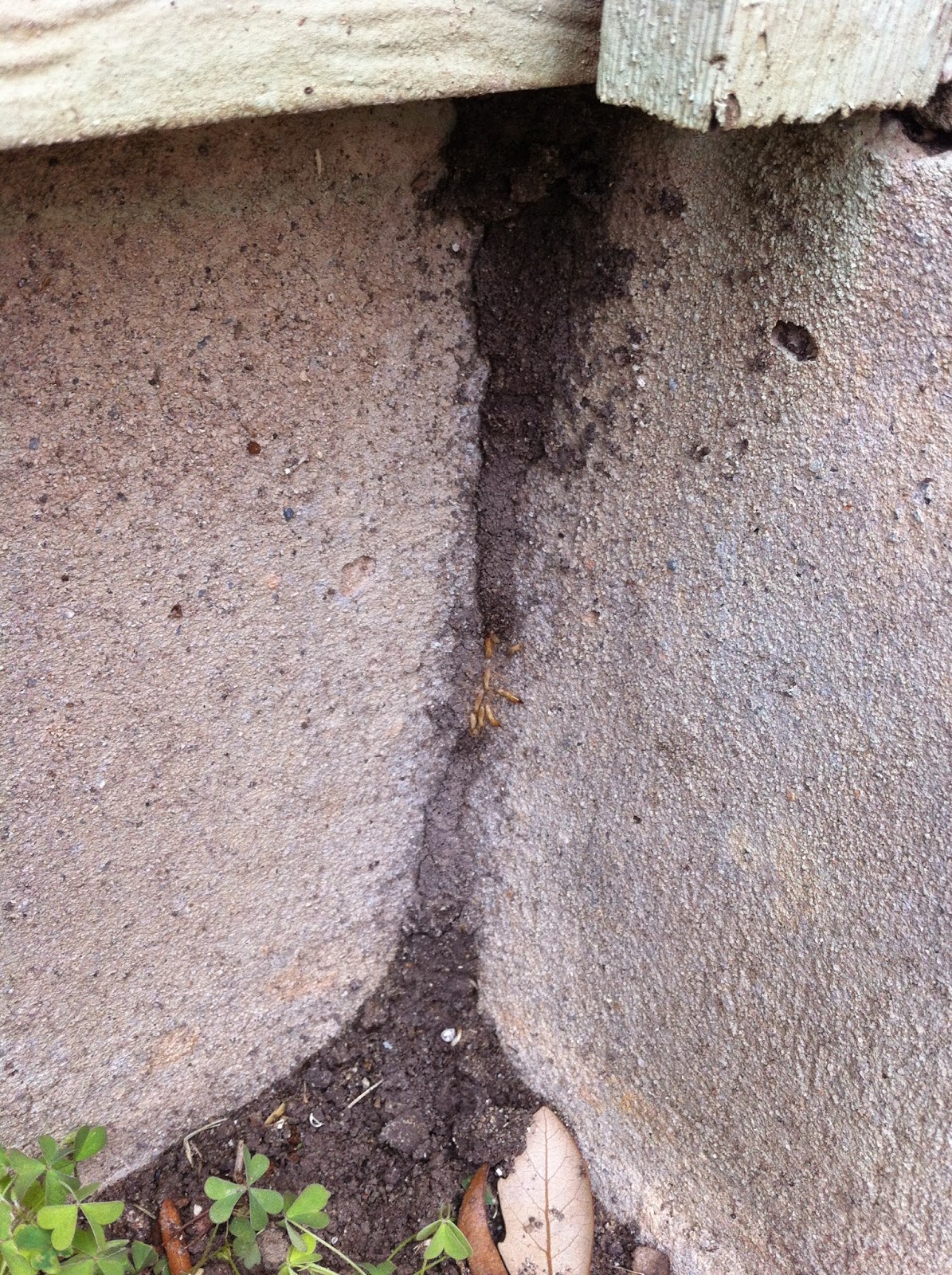Termite Season
Termites are probably the most feared insect to humans ... especially homeowners. They portray a vision of a house falling down, circus tent fumigations, a torn up yard, and major expense. Your home is usually your greatest investment, so naturally, an teeny insect that hides underground and eats wood inside you home is a scary thing!
February and March are considered termite swarming season in Texas. Although the weather has been up and down and its hard to predict when they may actually swarm, we have gone a few years without a good swarming season, and I imagine if not this year, at least next, will have some good swarms.
A termite swarm is when there is usually extreme humidity (often associated with rain) and the winged termites emerge from the nest to mate and start a new nest. The females will become queens and start a new colony.
Termites are still active at all times of the year, not just during swarming season. In fact, with the extra moisture and warmer weather, they are probably doing just great. Cellulose material from stumps, buried logs, lumber, landscaping timber and firewood are all examples of food sources for termites that most of us have somewhere in the landscape. The closer that is to your house, the more likely they are to start feeding on cellulose in the house.
The good news is that finding termites or termite damage should be mean that you need to take immediate action. Take some time to get some BIDs and figure out the best management options for your situation. You will know if the house is in danger of collapse!
For much more information about termites and management options, a fantastic webinar is being provided by Dr. Robert Puckett, an urban entomologist with Texas A&M AgriLife Extension on April 3rd at 1pm Central. He has extensive experience in termite field and lab research. Be sure to tune in for a rare opportunity to learn more about termites that you probably ever thought you would learn!
The link to the webinar is:
https://learn.extension.org/events/1853#.VRQza8Zx0ag
 |
| Subterranean termite mud tube and activity. |
February and March are considered termite swarming season in Texas. Although the weather has been up and down and its hard to predict when they may actually swarm, we have gone a few years without a good swarming season, and I imagine if not this year, at least next, will have some good swarms.
A termite swarm is when there is usually extreme humidity (often associated with rain) and the winged termites emerge from the nest to mate and start a new nest. The females will become queens and start a new colony.
Termites are still active at all times of the year, not just during swarming season. In fact, with the extra moisture and warmer weather, they are probably doing just great. Cellulose material from stumps, buried logs, lumber, landscaping timber and firewood are all examples of food sources for termites that most of us have somewhere in the landscape. The closer that is to your house, the more likely they are to start feeding on cellulose in the house.
The good news is that finding termites or termite damage should be mean that you need to take immediate action. Take some time to get some BIDs and figure out the best management options for your situation. You will know if the house is in danger of collapse!
For much more information about termites and management options, a fantastic webinar is being provided by Dr. Robert Puckett, an urban entomologist with Texas A&M AgriLife Extension on April 3rd at 1pm Central. He has extensive experience in termite field and lab research. Be sure to tune in for a rare opportunity to learn more about termites that you probably ever thought you would learn!
The link to the webinar is:
https://learn.extension.org/events/1853#.VRQza8Zx0ag


Comments